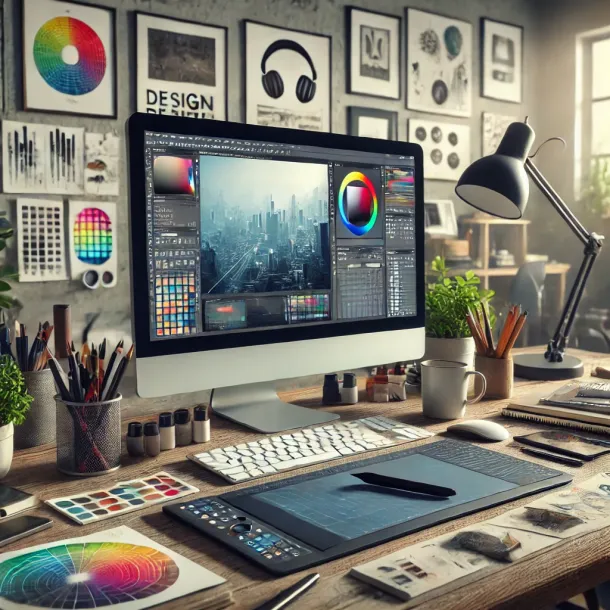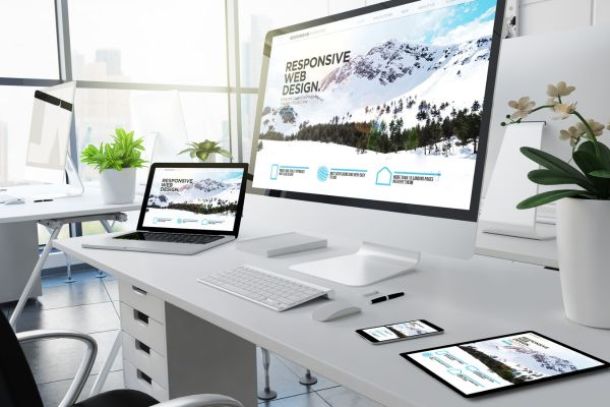Typography Trends in Modern Web Design
Typography Trends in Modern Web Design
Typography has always played a crucial role in design, but in the digital age, its importance has been magnified. With the increasing reliance on web design for communication, branding, and user experience, typography has evolved from merely setting the tone of a page to being a central element that drives the overall design. The way we use typefaces, spacing, and layout can influence not only aesthetics but also the readability, accessibility, and user engagement on a website. In this article, we will explore the latest typography trends in modern web design and how they are shaping the digital landscape.
The Importance of Typography in Web Design
Before diving into the trends, it’s essential to understand why typography is so critical in web design. Good typography enhances the user experience by making content readable, engaging, and aesthetically pleasing. It also reinforces brand identity and sets the tone for the entire website.
Readability and Accessibility
One of the primary functions of typography is to make text readable. In web design, this means choosing fonts that are legible on various devices and screen sizes, as well as ensuring that the text is accessible to all users, including those with visual impairments. Proper font size, line height, and contrast are all crucial factors that affect readability.
Aesthetic Appeal
Typography significantly contributes to the visual appeal of a website. The right choice of fonts can make a website look professional, playful, elegant, or cutting-edge, depending on the desired aesthetic. Typography is also a powerful tool for guiding users through a page, highlighting key messages, and creating a hierarchy of information.
Brand Identity
Typography is a key component of brand identity. The fonts used on a website should align with the brand’s personality and values. For example, a tech company might use modern, sans-serif fonts to convey innovation, while a luxury brand might opt for elegant serif fonts to evoke sophistication. Consistent use of typography across all brand touchpoints reinforces brand recognition.
Top Typography Trends in Modern Web Design
Typography trends are constantly evolving, driven by technological advancements, changing user preferences, and the creative experimentation of designers. Here are some of the most prominent typography trends in modern web design:
1. Bold and Oversized Typography
One of the most noticeable trends in recent years is the use of bold and oversized typography. This trend involves using large, attention-grabbing fonts that dominate the screen. It’s an effective way to make a statement and ensure that key messages are immediately visible to users.
Bold typography can be used for headers, hero sections, and even as a central design element. The key to making this trend work is to balance the bold text with sufficient white space and simpler, smaller body text to avoid overwhelming the user.
Why It Works: Bold typography commands attention and helps to quickly communicate the most important information. It’s particularly effective for websites that need to make a strong first impression or convey a sense of confidence and authority.
2. Custom Fonts and Unique Typefaces
With the increasing availability of custom fonts and typeface creation tools, many designers are moving away from standard, widely-used fonts in favor of custom or unique typefaces. Custom fonts allow brands to differentiate themselves from competitors and create a more memorable user experience.
This trend is particularly popular among brands that want to establish a distinct identity or convey a specific tone. Custom fonts can be designed to reflect the brand’s personality, whether it’s playful, serious, quirky, or elegant.
Why It Works: Custom fonts help brands stand out in a crowded digital landscape. They add a layer of uniqueness to a website and can make a lasting impression on visitors.
3. Variable Fonts
Variable fonts are one of the most exciting developments in typography. Unlike traditional fonts, which have fixed weights and styles, variable fonts allow designers to adjust the weight, width, and slant of a typeface dynamically. This flexibility opens up new possibilities for responsive design and creative expression.
Variable fonts are particularly useful for web design because they can adapt to different screen sizes and resolutions without requiring multiple font files. This not only improves the website’s performance but also provides more creative control over the typography.
Why It Works: Variable fonts offer a high degree of flexibility and creativity, allowing designers to create more dynamic and responsive typography. They also help reduce page load times by minimizing the number of font files needed.
4. Minimalist Typography
Minimalism continues to be a dominant trend in web design, and this is reflected in typography as well. Minimalist typography involves using simple, clean fonts with plenty of white space to create a sleek and modern look. This trend is often paired with a monochromatic or limited color palette to maintain a sense of simplicity and elegance.
In minimalist typography, the focus is on clarity and function. Sans-serif fonts are commonly used because of their clean lines and readability. However, serif fonts can also be used effectively in minimalist designs, especially when paired with generous spacing and a straightforward layout.
Why It Works: Minimalist typography enhances readability and creates a sense of calm and order on a webpage. It’s particularly effective for content-focused websites where the text needs to be the main focus.
5. Kinetic Typography
Kinetic typography, or animated text, is a trend that brings movement to typography. This trend involves adding animations to text to create a dynamic and engaging user experience. Kinetic typography can be used to highlight important information, create visual interest, or guide users through a narrative.
Animations can range from subtle effects, such as text fading in or sliding into place, to more complex sequences that involve multiple movements. The key to effective kinetic typography is ensuring that the animations are smooth and enhance the user experience rather than distracting from it.
Why It Works: Kinetic typography adds a layer of interactivity and engagement to a website. It can make content more memorable and help guide the user’s attention to specific areas of the page.
6. Retro and Vintage Fonts
Retro and vintage fonts have made a comeback in modern web design, with many designers drawing inspiration from the typography styles of the past. This trend involves using fonts that evoke a sense of nostalgia, such as those reminiscent of 70s disco, 80s arcade games, or 90s grunge.
Retro typography can add character and charm to a website, making it stand out in a sea of modern, minimalist designs. This trend is particularly popular in branding for products or services that want to convey a sense of heritage, authenticity, or fun.
Why It Works: Retro and vintage fonts create an emotional connection with the audience by tapping into nostalgia. They can add a unique personality to a website and make it more memorable.
7. Mixing Typefaces
Mixing different typefaces within the same design is a trend that allows for more creativity and visual interest. This approach involves pairing contrasting fonts, such as a bold sans-serif with an elegant serif, to create a dynamic and visually appealing composition.
When mixing typefaces, it’s important to maintain balance and ensure that the fonts complement each other. The goal is to create contrast without clashing, and to use different fonts to establish a clear hierarchy of information.
Why It Works: Mixing typefaces can add depth and personality to a design. It allows designers to play with contrasts and create a more engaging visual experience.
8. Typography as a Focal Point
In some modern web designs, typography is not just a supporting element but the focal point of the entire design. This trend involves using large, bold text as the main visual element on the page, often in place of images or other graphics.
This approach works particularly well for minimalist designs or websites with a strong message to convey. By making typography the central focus, designers can create a powerful and direct impact on the user.
Why It Works: Using typography as a focal point creates a strong visual impact and ensures that the message is clear and direct. It’s an effective way to communicate a brand’s identity or key message without relying on imagery.
9. Asymmetrical Typography
Asymmetry in typography involves breaking away from traditional grid-based layouts to create more dynamic and unconventional designs. This trend includes using text that is offset, angled, or placed in unexpected areas of the page to create a sense of movement and energy.
Asymmetrical typography can add a modern and edgy feel to a website. It challenges the conventional rules of design and creates a more spontaneous and creative visual experience.
Why It Works: Asymmetrical typography adds visual interest and breaks the monotony of traditional layouts. It can make a website feel more dynamic and engaging, capturing the user’s attention.
10. Handwritten and Script Fonts
Handwritten and script fonts bring a personal and human touch to web design. These fonts mimic the look of handwriting or calligraphy, adding warmth and character to a website. They are often used for branding, quotes, or headlines where a more informal or artistic feel is desired.
While handwritten fonts can add a unique flair to a design, they should be used sparingly and strategically. Overusing script fonts can affect readability, so it’s important to balance them with more straightforward typefaces.
Why It Works: Handwritten and script fonts add a personal and authentic feel to a design. They can make a website feel more approachable and convey a sense of creativity and individuality.
Conclusion
Typography is a powerful tool in modern web design, with the potential to shape user experience, convey brand identity, and enhance visual appeal. The trends highlighted in this article reflect the diverse ways in which designers are pushing the boundaries of typography to create more engaging, dynamic, and effective web designs. Whether you’re experimenting with bold, oversized text, embracing minimalism, or incorporating kinetic typography, staying informed about the latest trends can help you create designs that resonate with users and stand out in the digital landscape.


